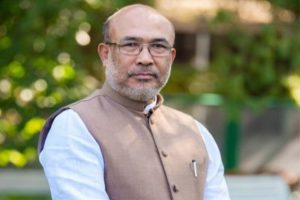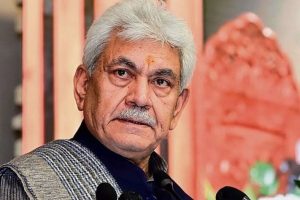Many new-age schools in the North Capital Region (NCR) have incorporated a transformational education system, which probably is the reason for the recent rise in the number of admissions in these schools compared to the schools located in Delhi.
Parents, educators and industry experts are witnessing a recent shift in preferences from schools in Delhi to NCR. There are several reasons that have influenced the move, but among them, the top deal-makers or deal-breakers are flexible and advanced curriculum, child-friendly learning environment, student-teacher ratio, state-of-the-art infrastructure, focus on holistic development and exposure to varied co-curricular activities, etc.
The need of the hour is that the present-day educational institutions follow a flexible and advanced curriculum along with progressive pedagogical practices aligned to the 21st-century skill requirements.
Backing the similar thought, Vishnu Karthik, Director, The Heritage group of Schools & CEO, Xperiential Learning Systems, said, “The progressive schools in Gurugram that started their journey just 15-16 years back, looked really hard at the practices and pedagogy of the renowned traditional schools in Delhi and went back to the drawing board. They evaluated the practices and pedagogy followed by the traditional schools for the value they added to authentic student learning and for their alignment with expectations of the 21st-century workplace. The traditional schools, on the other hand, have been slow to embrace change and allow fresh pedagogical approaches to permeate through their walls.”
Besides, the student-teacher ratio’s concern fairly dominates parents’ school selection criteria as better student-teacher ratios enable individualized attention and personalized learning.
It also provides a conducive learning environment, as a teacher can give special attention to all and is highly likely to know about the strengths and weaknesses of every child if the core strength of a class ranges between 16 and 20 students.
A parent whose child studies in Grade 3 in Pathways World School, Aravali, said, “A class with 30-40 children is not the situation any parent would want to be in. With classes going online due to Covid, managing a class of 16 is much better than in a class with 30-40 kids, with one teacher’s job to keep sliding from left to right on Zoom just to keep an eye on kids.”
Another parent, Amrata Singh, pointed out that she opted for Khaitan Public School, Ghaziabad, for her son because Delhi has a poor student-teacher ratio.
As per the official record, Delhi has the second-worst pupil-teacher ratio with 32.7 in the primary school level, 29.3 in upper primary (Classes VI-VIII), 27.6 in secondary (classes IX-X) and 17.9 in higher secondary (Classes XI-XII).
She said, “Every parent deserves a peaceful mind knowing that their child is getting the much-needed attention and grasping new information.” Her school selection also took note of the other facilities offered, which made her overlook the distance. She said, “For parents, it is very important that their child explores new dimensions that stretch his or her mental capacity to comprehend and learn. For schools which are putting in such amount of efforts in providing exceptional facilities to students, parents do not mind the distance.”
Like Ms. Singh, Himani Dalmia & Akash Premsen, whose daughter is studying in Grade 1 at Heritage International Xperiential School, gives weightage to the school’s academic and infrastructural offering over distance.
The couple said, “We wanted a place that was as nurturing and progressive as our daughter’s preschool, Dreaming Child at Qutab Institutional Area. Dreaming Child follows a child-friendly approach, blending the best pedagogical methods globally with a beautifully designed space that seems like something out of Scandinavia – the gold standard in education! Class sizes are small, with an intimate teacher-child ratio of 6:1 or 8:1, depending on the age.
None of the Delhi schools seemed a suitable transition from a space like this. Heritage International, on the other hand, seemed like the natural successor. With its IB curriculum, open-plan, world-class campus, small class sizes, unparalleled teacher-child ratio, robust teacher training programs, and an open-door policy with parents, it seemed like the natural choice for us. The only catch was its location. But, we took the mental leap. While we would have preferred a school closer to our house, but when we did a cost-benefit analysis, the quality of education won over the commute time.”
Addressing parents’ concern and hesitation over distance, Pretti Gupta, Head – Parent Relations, Khaitan Public School, Ghaziabad, said, “We understand the concern of distance and travel-time which goes in commuting to schools. We have seen parents putting a lot of effort into finding the right fit for their children. In most cases, distance is overshadowed by bigger benefits such as well-ventilated classrooms, hygienic surroundings, world-class infrastructure, and premium academic offerings. In relative terms, it is easier to say that NCR schools are emerging as next-gen schools, where parents queries or concerns are well attended. For our own institution, we follow suit as we all hold a common goal – larger benefit of our children.”
With the changing times, parents are on the lookout for schools that encourage and allow their child to develop age appropriately and integrate life lessons, community living, and a sense of responsibility in learning.
Monika Ganjoo, whose teenage daughter is studying in Seth Anandram Jaipuria School, was clear about her selection parameters.
She said, “A student is able to focus more on learning in a reasonably comfortable environment. In my case, besides the School’s academic record, its sports infrastructure, state-of-the-art laboratories, well-equipped library and a pleasing ambience acted as positive reinforcements.”
Besides infrastructure, space is another differentiating factor between Delhi and NCR schools, put across by Ms Sonia Ghandy Mehta, Director, Pathways World School, Aravali.
The leading educator said, “Since space is not a constraint for NCR Schools, they are more open to admitting a larger number of Students. Larger spaces mean more opportunities for co-curricular activities, both indoors & outdoors. Larger galaxies also open doors for enhancing creative skills while being close to nature. After all, a healthy mind nurtures a healthy body. Schools in NCR are more particular about the student-teacher ratio ensuring that personalized attention is given, resulting in a memorable learning experience in the most important part of a student’s life — her/his School.”
Manju Rana, Director Schools, Seth Anandram Jaipuria Group of Educational Institutions, summed up the rising popularity of the schools in NCR to a few factors, including deteriorating financial health of Delhi schools and quality of education offered by them.
She highlighted that the schools in Delhi are highly regulated and suffocated due to an imbalance between increasing salaries governed by the pay commission revision and zero/ negligible fee rise.
Moreover, their education lacks innovative measures required to implement the new-age methodology. Furthermore, Delhi being politically charged and entangled in an over-regulated administrative quagmire, many leading educational groups have turned wary of operating schools in Delhi.
She added, “Self-sufficiency of schools and lesser interference by the government in NCR schools are some of the reasons that lead to a better school experience, instructional methodology, infrastructure, demographics, 21st-century skills-focused curriculum, modern initiatives, etc. being introduced to the students. This has obviously opened avenues for increasing enrollments in NCR.”











